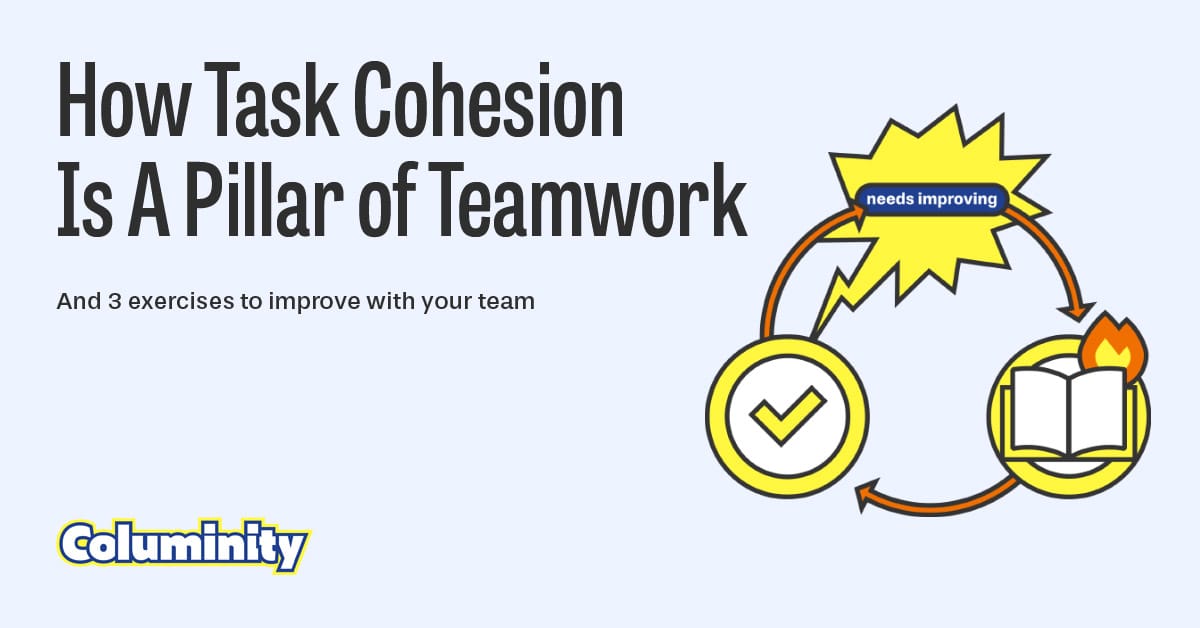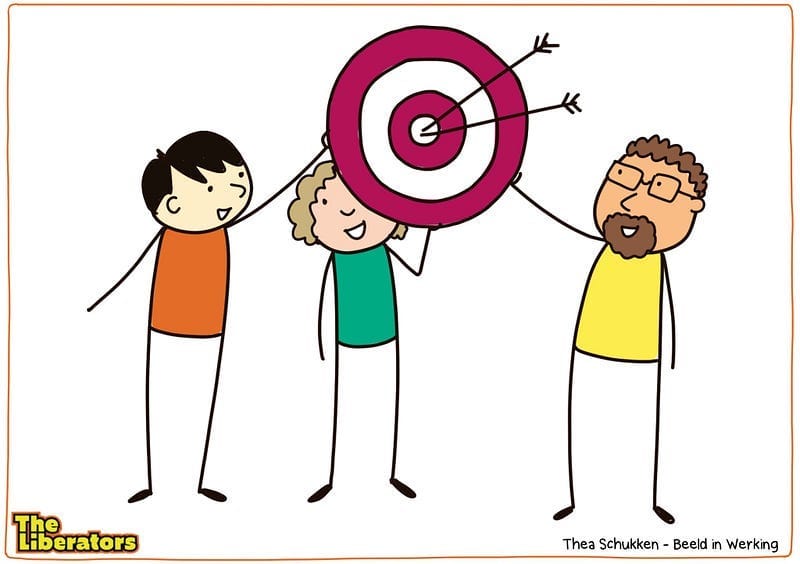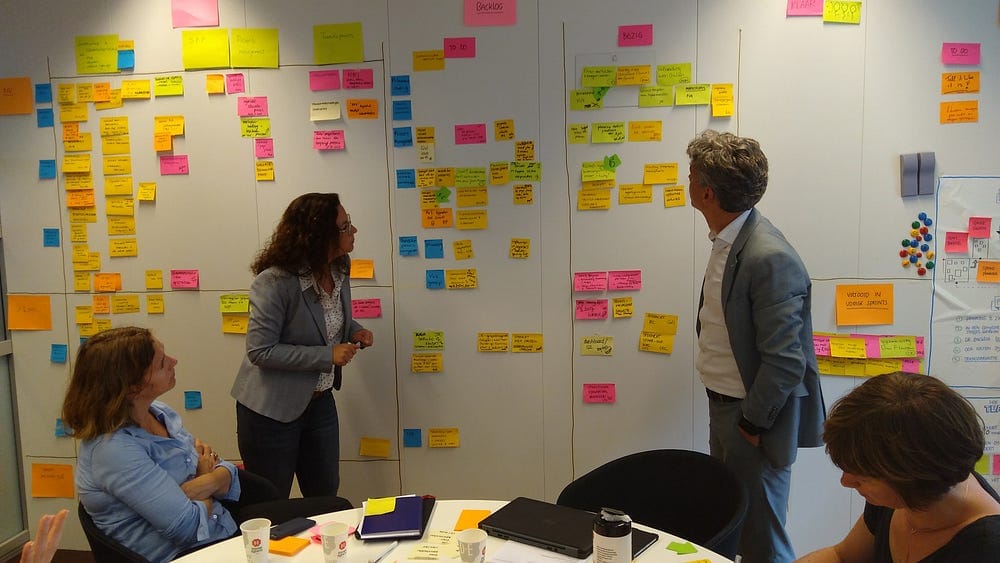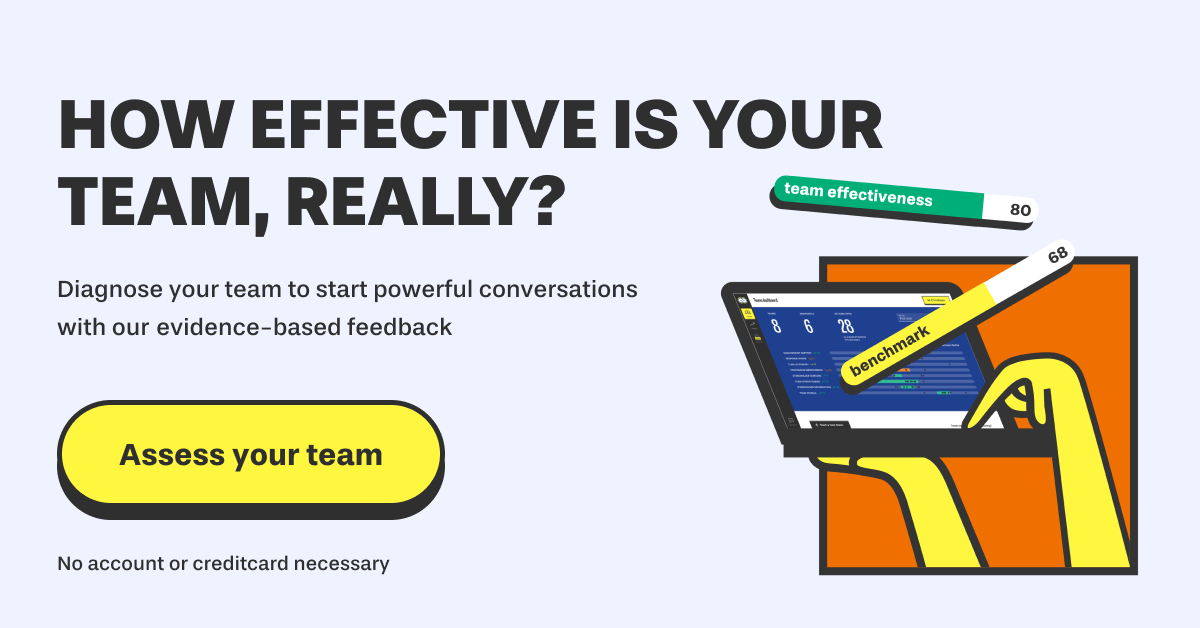How Task Cohesion Is A Pillar of Teamwork

When is a team really a team? When is it just a bunch of people working on their own stuff in the same physical proximity? As an organizational psychologist, I’ve always been fascinated by such questions.
We are on a mission to unleash teams through an evidence-based approach. In this post, we focus on the concept of task cohesion. We begin with a brief overview of scientific research to ground our discussion on facts. The attention then shifts to practical strategies to increase task cohesion in your team.
You can measure the level of task cohesion for your team(s) with Columinity. Go to teamworkquality.columinity.com to try now. Our free plan is great for individual teams, but with a paid plan you can track this factor - and many others - across many teams in the same or different organizations.
Scientific research on task cohesion
Task cohesion is one aspect of group cohesion that has long been studied by social and organizational psychologists. Group cohesion as a whole is a key variable of effective work teams (Hackman, 1987). It is often conceptualized as consisting of social cohesion, task cohesion, and individual attraction to the group (Carless & De Paola, 2000). We covered the latter two in another post.
Task cohesion is present when team members acknowledge that the work they do is highly related. More practically, it means that members are generally not able to complete their own work without help, support, or work from others in the team. “Task cohesion means that members are generally not able to complete their own work without help, support, or work from others in the team.”
“Task cohesion is when team members depend on each other to get their own work done.”
Of the three elements of group cohesion, task cohesion is most closely linked to team performance (Mullen & Copper, 1994; Zaccaro, 1991), team spirit, social support, and workload sharing (Carless & De Paola, 2000). There is some empirical evidence that teams with high social cohesion also start exhibiting higher task cohesion over time (Zaccaro & Lowe, 1988).

So, task cohesion is clearly essential for high-quality teamwork. It makes teamwork more effective and also more fulfilling. One can even say that there is no team without task cohesion. However, the challenge that many teams face is that they don’t know how to build task cohesion. Instead, they see a group of people content (or even preferring to) work on their own tasks in isolation. I’ve certainly been part of such teams.
So, what should you do next? Let's explore three practical strategies for starting to build task cohesion.
Strategy 1: Set goals together and clarify how everyone can contribute
A great strategy to create task cohesion is to set goals together and clarify how each member can contribute to achieving them. A shared goal focuses teams and encourages members to pool their skills, resources, and efforts. Without shared goals, it is very hard to be a team in any real sense of the word.
It might sound obvious, but many teams struggle with goal-setting. Teams and their managers often understand the value of goals on a theoretical level, but they find it too difficult to put into practice and ignore them.

In our experience, this lies in three underlying reasons (or dysfunctions?)
- In some organizations, work items are assigned to individual team members from higher up. So any shared goal automatically becomes the accumulation of those work items.
- The work is sometimes already assigned before a goal can be set. If that work consists of many unconnected tasks, teams try to reverse-engineer a goal out of it. But that is understandably hard.
- Many people overcomplicate what a “good goal” should look like. For example, they try to find a goal that covers all the work. Or they believe that teams can’t perform tasks unrelated to the goal.
As we wrote much more extensively when we covered goal-setting theory (Locke & Latham, 1990), a good goal provides a directive function (it guides what to spend time on), an energizing function (it is motivating), and a persistence function (it is challenging enough to persist when it is tough, but not too challenging to give up altogether). One simple strategy to set goals is to do this:
- At the start of your workday as a team, get everyone together in a physical or virtual space.
- (2 min) Ask each member to individually write a list of things they believe are most important for the team to do in the next 24 hours.
- (4 min) Ask members to form pairs (or one group of three if you have an uneven number) and ask them to share their lists and notice themes or potential goals.
- (10 min) Ask each pair to share what they noticed. Then work together to complete this template: “Today we will focus on …. so that …”. Any work that doesn’t fit the focus can be done tomorrow or some other day. If a work item comes up (also later during the day) that doesn’t fit the focus but seems very urgent, decide as a team if it needs to be done today or can wait for tomorrow.
- Keep the goal clearly visible throughout the day. If you want, you can do a quick check-in with the team after lunch to see how the work is going and if adjustments are necessary.
You can also repeat the above exercise for each week or iteration. The point is to ingrain this goal-based thinking in teams.
If your team gets work handed down to it in such detail that you can’t easily decide on a day-by-day what to focus on, ask permission from management to try this approach for a few weeks.
Strategy 2: Synchronize and coordinate tasks between members with a Flow Board
It is hard to have high task cohesion in teams when members have no idea what everyone is working on. A great approach to creating such transparency is with a Flow Board (or "Scrum Board"). You can make a physical board and populate it with the work your team needs to do. In the example, the green stickies contain the more significant work items. Each work item is broken down into several “to do” stickies. Whenever a member starts on one of the tasks, they pull it into “In Progress” and add their initials, and to “Done” when it's ready. Like so:

You can replace the boring initials with funny avatars to liven up a Flow Board. I’ve often used funny magnets like different Autobots, pokemon, or whatever else made sense to the team. Each member picks an avatar and can stick it on the tasks they have “in progress”.
A physical board like this quickly becomes an “information radiator” that provides an overview of what everyone on the team is working on. It makes it easier for members to see where they can help others. New work can also be added as it emerges. Some practice is needed to get this into the system of a team. One thing I usually do initially is remind people to mark what they’re doing on the board. Activities that take less than 15 minutes don’t have to be on the board — we don’t want to create administration for the sake of administration.
“A physical board quickly becomes an “information radiator” in that it provides an overview of what everyone on the team is working on.”
Obviously, a board like this can also be set up virtually. One challenge of virtual setups is that you miss the visual cue of when someone gets up, walks to the board, and changes something. That cue alone is a trigger to ask questions like “How did it go?” or “How can I help you?”.

Strategy 3: Build Social Cohesion
As the research by Zaccaro & Lowe (1988) suggests, there is evidence that social cohesion builds task cohesion in turn. In practical terms, people must first appreciate each other and their team before they start depending on each other for their work. The flip side of this also seems to be true; if members don’t like each other or their team, you won’t see high task cohesion either — except maybe in settings where professionalism is so strong that they transcend personal preferences (like in the military). This matches my own experience as a member of teams; it's hard to depend on others for your work — the essence of task cohesion — when you don’t really know or like them.
So, another evidence-based strategy is to invest in social cohesion to build task cohesion. I’ve written extensively about this here. That post outlines three strategies that we’ve found very helpful:
- Create a team identity
- Establish shared norms and values
- Promote shared experiences and rituals
Look at the original post to learn about these strategies in more detail.
Closing Words
Task cohesion is what makes a team out of a group of people. We also know from research that task cohesion is a critical indicator of teamwork and a strong predictor of team spirit, productivity, and overall performance.
In this post, we provided a brief overview of scientific research on task cohesion and three practical strategies for making progress. Give them a try and see how they will improve the quality of your teamwork.
You can measure the level of task cohesion for your team(s) with Columinity. Go to teamworkquality.columinity.com to try now. Our free plan is great for individual teams, but with a paid plan you can track this factor - and many others - across many teams in the same or different organizations.


